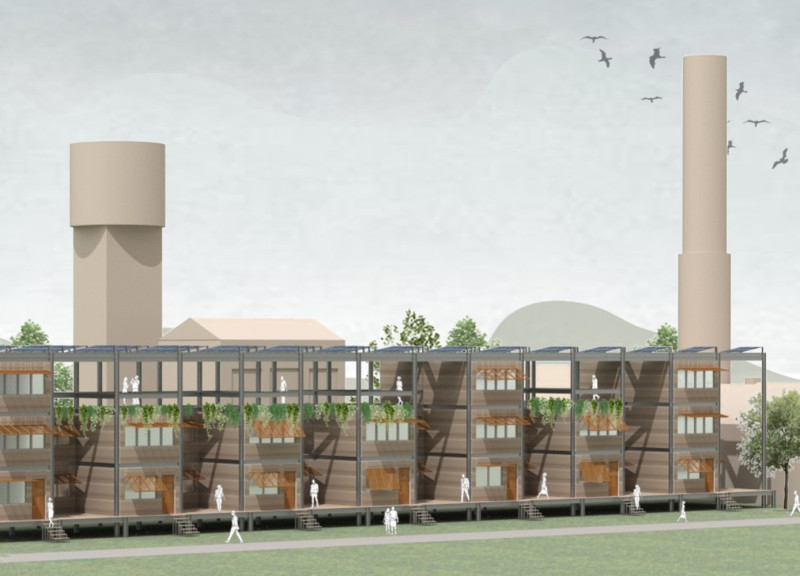5 key facts about this project
At its core, the project functions as a modular living space that facilitates a variety of housing configurations, catering to different demographics and family sizes. This adaptability is a central theme within the design, allowing for one, two, and three-bedroom arrangements. The design philosophy adopts a “bookshelf” concept, where individual units can be perceived as modules stacked together, representing both visual appeal and practical flexibility. This approach not only enhances the aesthetic layers of the building but also encourages social connectivity among residents.
The use of materials plays a critical role in the project’s function and overall ethos. Recycled steel serves as the primary structural element, providing a robust yet lightweight framework that supports the modular design. In addition to being durable, the material enhances the project’s sustainability credentials by reducing the demand for new resources. Complementing the steel framework, reclaimed wood panels are applied to the façade, offering thermal insulation while creating an inviting, natural feel. The thoughtful combination of materials not only meets functional requirements but also reflects the architectural design's intention to integrate seamlessly with the local milieu.
The project incorporates expansive glass elements that bring abundant natural light into the living spaces, enhancing both the aesthetic quality and the overall well-being of residents. These glass components foster a connection with the outside environment, encouraging occupants to engage with their surroundings. This relationship is further enriched by the inclusion of communal outdoor areas, such as gardens and shared patios, which promote social interaction among residents and create a vibrant community atmosphere.
Sustainability is meticulously woven into the project’s fabric. Beyond its material selection, the architecture incorporates green roof systems that contribute to biodiversity, manage rainwater effectively, and provide quality outdoor space. The integration of solar panels also reinforces the project’s ecological commitment, allowing for the generation of renewable energy and lowering utility costs for residents. These innovations serve as practical solutions that align with contemporary environmental expectations, indicating a strong commitment to responsible design practice.
Another key design feature is its innovative prefabrication process. This approach not only facilitates efficiency in construction but also minimizes the environmental impact associated with building processes. Each modular unit is manufactured off-site, leading to reduced waste and shorter construction timelines. This method demonstrates a forward-thinking attitude towards construction that aims for both economic viability and environmental responsibility.
The unique design of this project transcends mere aesthetics; it addresses critical issues relating to urban living. By focusing on modularity, sustainable practices, and community interaction, the design reflects an understanding of the complexities inherent in urban environments. It emphasizes the importance of integrating affordable living options while ensuring residents have access to communal spaces that foster relationships and enhance the quality of life.
For those interested in delving deeper into the functional and aesthetic details of the architecture, exploring the architectural plans, sections, and overall design strategies of this project will provide further insights into its thoughtful architecture. This project serves as a relevant case study for contemporary architectural ideas aimed at solving complex housing challenges in urban settings. Visitors eager to understand intricate aspects of the design are encouraged to review the project presentation for a comprehensive look at how innovative architectural thinking can contribute to more sustainable and socially responsive urban living.























